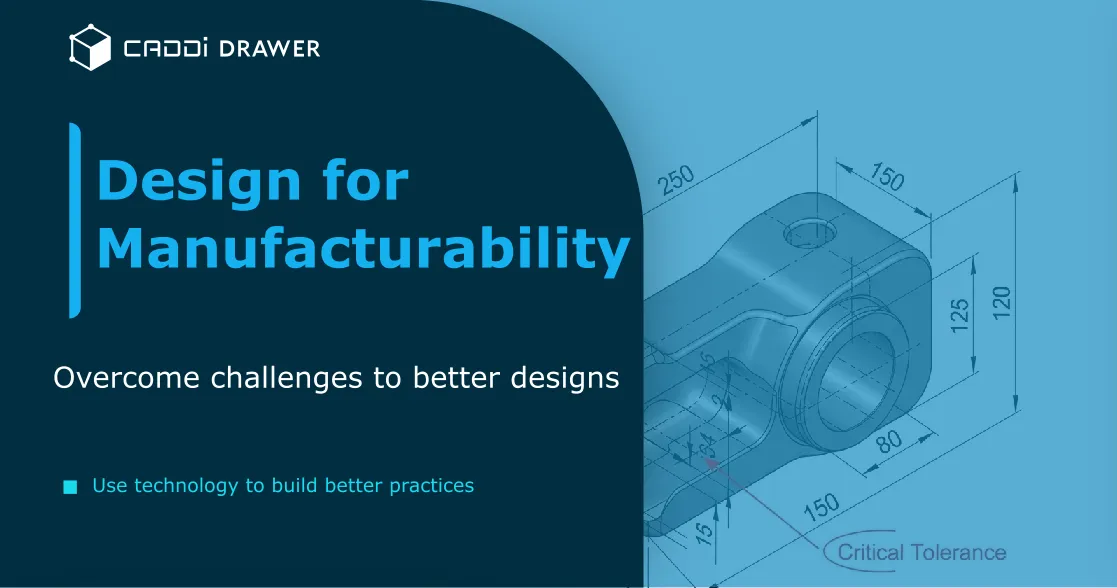The Supplier Scorecard: A Practical Framework for Evaluating, Managing, and Collaborating with Your Manufacturing Partners

Table of Contents

In the complex and dynamic landscape of manufacturing, effectively managing supplier relationships is paramount for achieving operational efficiency, cost reduction, and sustained competitive advantage. Moving beyond purely transactional interactions, a supplier scorecard provides a structured and data-driven framework for evaluating, managing, and fostering collaboration with your manufacturing partners. It transforms supplier management from a reactive exercise into a strategic initiative, enabling businesses to make informed decisions and build more resilient supply chains.
The Criticality of Supplier Evaluation
Supplier evaluation is the systematic assessment of a supplier's performance and capabilities to ensure they meet a company's needs and expectations. Robust evaluation minimizes hazards like compromised quality, missed deliveries, and higher prices, while also uncovering opportunities for improving supplier relationships and leveraging their capabilities for competitive advantage. This process is crucial at various stages, including initial selection, routine monitoring, contract renewal, and when sourcing new products or services.
Essential Categories for a Comprehensive Supplier Scorecard
A well-designed supplier scorecard typically includes key performance indicators (KPIs) across several vital categories:
- Quality: This category assesses a supplier's ability to consistently meet specifications. Key metrics include defect rates, instances of customer rejects, and results from supplier quality audits. Maintaining consistent product quality across a diverse supplier base is a persistent challenge, as variability directly impacts the final product and brand reputation.
- Cost: Beyond just unit price, a comprehensive scorecard considers the total cost analysis, including logistics and quality, and tracks the supplier's cost reduction performance. Evaluating a supplier's cost competitiveness is challenging without a clear baseline, as a seemingly cheap supplier might be overcharging for specific parts.
- Delivery: This measures a supplier's reliability in meeting timelines. Important KPIs are on-time delivery percentages, lead time (time from order to delivery), and their ability to mitigate supply chain disruptions. Delays can significantly impact production schedules.
- Responsiveness and Collaboration: This focuses on the ease and effectiveness of communication and partnership. Metrics include quote turnaround time, overall communication effectiveness, and the supplier's customization ability. Poor communication can lead to misunderstandings, delays, and strained relationships. Building strong, collaborative relationships is paramount for long-term success.
- Financial Stability: Assessing a supplier's financial health ensures their ability to sustain and invest in the business relationship.
- Capabilities and Innovation: This evaluates the supplier's technical expertise, their capacity for ongoing innovation, and the resources they dedicate to your business.
- Compliance: This includes adherence to regulatory standards (e.g., ISO certifications), contractual terms and conditions, and alignment with ethical practices. Failure to verify compliance can expose organizations to significant legal and financial liabilities.
- Location and component sourcing: As tariffs cause price discrepancies from suppliers from different countries, understanding where your supplier is located, and where they source component materials from, is necessary to anticipate price shifts.
Organizations typically use methods like scorecards, site visits, and surveys to evaluate suppliers. Prioritizing criteria using a weighted scoring system can help quantify and objectively compare suppliers based on your specific needs and goals.
Implementing and Managing Performance
Effective supplier scorecard implementation involves forming a cross-functional review team to gather data from various sources. It's crucial to provide structured feedback to suppliers, highlighting both strengths and areas for improvement, and to set clear corrective actions or improvement plans where needed. Offering incentives and recognition to top-performing suppliers can further motivate them to excel. This proactive management strengthens relationships and ensures both parties are aligned on priorities and continuous improvement.
Challenges in Traditional Supplier Scorecarding
Despite the clear benefits, traditional methods of building and leveraging supplier scorecards face significant challenges:
- Data Silos and Inconsistency: Critical data needed for a comprehensive scorecard—such as past purchase orders, quality reports, and design specifications—is often isolated within different departments or systems (e.g., ERP, PLM, spreadsheets), leading to inconsistencies and hindering a unified view.
- Lack of Standardization: The absence of standardized data formats and documentation can complicate information sharing and make objective comparisons difficult.
- Subjectivity and Tribal Knowledge: Evaluating a supplier's true "cost competitiveness" is difficult without a clear baseline, often relying on subjective assessments or the undocumented "tribal knowledge" of experienced personnel. This knowledge is vulnerable to loss when experienced employees retire.
- Time-Consuming Manual Processes: Manually searching, collecting, and cross-referencing data from disparate sources is incredibly time-consuming, pulling procurement professionals away from more strategic initiatives.
How CADDi Drawer Enhances Supplier Scorecards
CADDi Drawer offers a cutting-edge solution to overcome these traditional challenges, enabling manufacturers to build more accurate, objective, and actionable supplier scorecards:
- Digitizes and Structures Unstructured Data: CADDi Drawer automatically scans and extracts data from PDF drawings, including handwritten notes and dimensions. This transforms unstructured data into searchable, structured assets, making decades of legacy information instantly accessible.
- Connects Disparate Supply Chain Data: It seamlessly links drawings with relevant supply chain information such as quotations, cost breakdowns, supplier details, quality defect reports, spec sheets, and data from ERP, CAM, and CAD systems. This creates a "single source of truth" that breaks down departmental data silos, providing a holistic view of each part and its associated history.
- Enables Intelligent Search and Comparison: CADDi's patented Similarity Search identifies parts based on their geometric shape, even from a hand-drawn sketch, allowing users to find similar parts across their entire archive, regardless of part numbers or text descriptions. This is complemented by keyword search (by material, size, part name, notes, etc.). This drastically reduces search time—from hours to seconds or minutes—freeing up procurement and engineering teams for higher-value tasks.
- Provides Objective Cost and Quality Insights: For the "Cost" section of a scorecard, CADDi allows procurement managers to compare a supplier's quotes against the historical cost data for geometrically similar parts, providing an objective measure of their competitiveness. This helps in identifying price inconsistencies and negotiating effectively. For "Quality," if a defect is found in one part, CADDi can quickly identify all other parts purchased from that supplier with similar features or materials, enabling proactive quality checks and risk mitigation across the supplier's portfolio.
- Fosters Cross-functional Collaboration: By centralizing and linking data, CADDi Drawer enhances collaboration between engineering, procurement, quality, and sales teams. Engineers can leverage past designs for new product development, reducing costs and accelerating time-to-market. Procurement can engage earlier and more effectively with engineering, leading to faster product development.
In essence, CADDi Drawer transforms the supplier scorecard from a static reporting tool into a dynamic, data-driven instrument for strategic supplier relationship management. By providing deep, objective insights and streamlining data access, it empowers manufacturers to optimize their supplier base, improve quality, reduce costs, and build more resilient and efficient supply chains.
Conclusion
In today's competitive manufacturing environment, a robust supplier scorecard is more than a metric-tracking tool; it's a strategic imperative for building and maintaining strong, mutually beneficial supplier relationships. By moving beyond subjective assessments and leveraging advanced data management solutions like CADDi Drawer, manufacturers can gain unprecedented visibility into their supplier performance, drive continuous improvement, and ensure that their supply chain remains agile and resilient in the face of evolving market demands.
Ready to see how CADDi can help you make supplying more strategic with data access? Explore our interactive product tour or book a personalized demo.
In the complex and dynamic landscape of manufacturing, effectively managing supplier relationships is paramount for achieving operational efficiency, cost reduction, and sustained competitive advantage. Moving beyond purely transactional interactions, a supplier scorecard provides a structured and data-driven framework for evaluating, managing, and fostering collaboration with your manufacturing partners. It transforms supplier management from a reactive exercise into a strategic initiative, enabling businesses to make informed decisions and build more resilient supply chains.
The Criticality of Supplier Evaluation
Supplier evaluation is the systematic assessment of a supplier's performance and capabilities to ensure they meet a company's needs and expectations. Robust evaluation minimizes hazards like compromised quality, missed deliveries, and higher prices, while also uncovering opportunities for improving supplier relationships and leveraging their capabilities for competitive advantage. This process is crucial at various stages, including initial selection, routine monitoring, contract renewal, and when sourcing new products or services.
Essential Categories for a Comprehensive Supplier Scorecard
A well-designed supplier scorecard typically includes key performance indicators (KPIs) across several vital categories:
- Quality: This category assesses a supplier's ability to consistently meet specifications. Key metrics include defect rates, instances of customer rejects, and results from supplier quality audits. Maintaining consistent product quality across a diverse supplier base is a persistent challenge, as variability directly impacts the final product and brand reputation.
- Cost: Beyond just unit price, a comprehensive scorecard considers the total cost analysis, including logistics and quality, and tracks the supplier's cost reduction performance. Evaluating a supplier's cost competitiveness is challenging without a clear baseline, as a seemingly cheap supplier might be overcharging for specific parts.
- Delivery: This measures a supplier's reliability in meeting timelines. Important KPIs are on-time delivery percentages, lead time (time from order to delivery), and their ability to mitigate supply chain disruptions. Delays can significantly impact production schedules.
- Responsiveness and Collaboration: This focuses on the ease and effectiveness of communication and partnership. Metrics include quote turnaround time, overall communication effectiveness, and the supplier's customization ability. Poor communication can lead to misunderstandings, delays, and strained relationships. Building strong, collaborative relationships is paramount for long-term success.
- Financial Stability: Assessing a supplier's financial health ensures their ability to sustain and invest in the business relationship.
- Capabilities and Innovation: This evaluates the supplier's technical expertise, their capacity for ongoing innovation, and the resources they dedicate to your business.
- Compliance: This includes adherence to regulatory standards (e.g., ISO certifications), contractual terms and conditions, and alignment with ethical practices. Failure to verify compliance can expose organizations to significant legal and financial liabilities.
- Location and component sourcing: As tariffs cause price discrepancies from suppliers from different countries, understanding where your supplier is located, and where they source component materials from, is necessary to anticipate price shifts.
Organizations typically use methods like scorecards, site visits, and surveys to evaluate suppliers. Prioritizing criteria using a weighted scoring system can help quantify and objectively compare suppliers based on your specific needs and goals.
Implementing and Managing Performance
Effective supplier scorecard implementation involves forming a cross-functional review team to gather data from various sources. It's crucial to provide structured feedback to suppliers, highlighting both strengths and areas for improvement, and to set clear corrective actions or improvement plans where needed. Offering incentives and recognition to top-performing suppliers can further motivate them to excel. This proactive management strengthens relationships and ensures both parties are aligned on priorities and continuous improvement.
Challenges in Traditional Supplier Scorecarding
Despite the clear benefits, traditional methods of building and leveraging supplier scorecards face significant challenges:
- Data Silos and Inconsistency: Critical data needed for a comprehensive scorecard—such as past purchase orders, quality reports, and design specifications—is often isolated within different departments or systems (e.g., ERP, PLM, spreadsheets), leading to inconsistencies and hindering a unified view.
- Lack of Standardization: The absence of standardized data formats and documentation can complicate information sharing and make objective comparisons difficult.
- Subjectivity and Tribal Knowledge: Evaluating a supplier's true "cost competitiveness" is difficult without a clear baseline, often relying on subjective assessments or the undocumented "tribal knowledge" of experienced personnel. This knowledge is vulnerable to loss when experienced employees retire.
- Time-Consuming Manual Processes: Manually searching, collecting, and cross-referencing data from disparate sources is incredibly time-consuming, pulling procurement professionals away from more strategic initiatives.
How CADDi Drawer Enhances Supplier Scorecards
CADDi Drawer offers a cutting-edge solution to overcome these traditional challenges, enabling manufacturers to build more accurate, objective, and actionable supplier scorecards:
- Digitizes and Structures Unstructured Data: CADDi Drawer automatically scans and extracts data from PDF drawings, including handwritten notes and dimensions. This transforms unstructured data into searchable, structured assets, making decades of legacy information instantly accessible.
- Connects Disparate Supply Chain Data: It seamlessly links drawings with relevant supply chain information such as quotations, cost breakdowns, supplier details, quality defect reports, spec sheets, and data from ERP, CAM, and CAD systems. This creates a "single source of truth" that breaks down departmental data silos, providing a holistic view of each part and its associated history.
- Enables Intelligent Search and Comparison: CADDi's patented Similarity Search identifies parts based on their geometric shape, even from a hand-drawn sketch, allowing users to find similar parts across their entire archive, regardless of part numbers or text descriptions. This is complemented by keyword search (by material, size, part name, notes, etc.). This drastically reduces search time—from hours to seconds or minutes—freeing up procurement and engineering teams for higher-value tasks.
- Provides Objective Cost and Quality Insights: For the "Cost" section of a scorecard, CADDi allows procurement managers to compare a supplier's quotes against the historical cost data for geometrically similar parts, providing an objective measure of their competitiveness. This helps in identifying price inconsistencies and negotiating effectively. For "Quality," if a defect is found in one part, CADDi can quickly identify all other parts purchased from that supplier with similar features or materials, enabling proactive quality checks and risk mitigation across the supplier's portfolio.
- Fosters Cross-functional Collaboration: By centralizing and linking data, CADDi Drawer enhances collaboration between engineering, procurement, quality, and sales teams. Engineers can leverage past designs for new product development, reducing costs and accelerating time-to-market. Procurement can engage earlier and more effectively with engineering, leading to faster product development.
In essence, CADDi Drawer transforms the supplier scorecard from a static reporting tool into a dynamic, data-driven instrument for strategic supplier relationship management. By providing deep, objective insights and streamlining data access, it empowers manufacturers to optimize their supplier base, improve quality, reduce costs, and build more resilient and efficient supply chains.
Conclusion
In today's competitive manufacturing environment, a robust supplier scorecard is more than a metric-tracking tool; it's a strategic imperative for building and maintaining strong, mutually beneficial supplier relationships. By moving beyond subjective assessments and leveraging advanced data management solutions like CADDi Drawer, manufacturers can gain unprecedented visibility into their supplier performance, drive continuous improvement, and ensure that their supply chain remains agile and resilient in the face of evolving market demands.
Ready to see how CADDi can help you make supplying more strategic with data access? Explore our interactive product tour or book a personalized demo.
.svg)



.svg)
.svg)
.svg)









